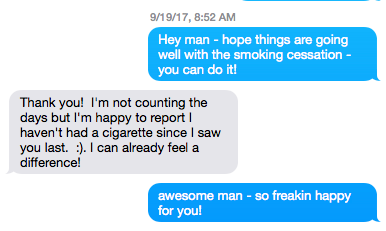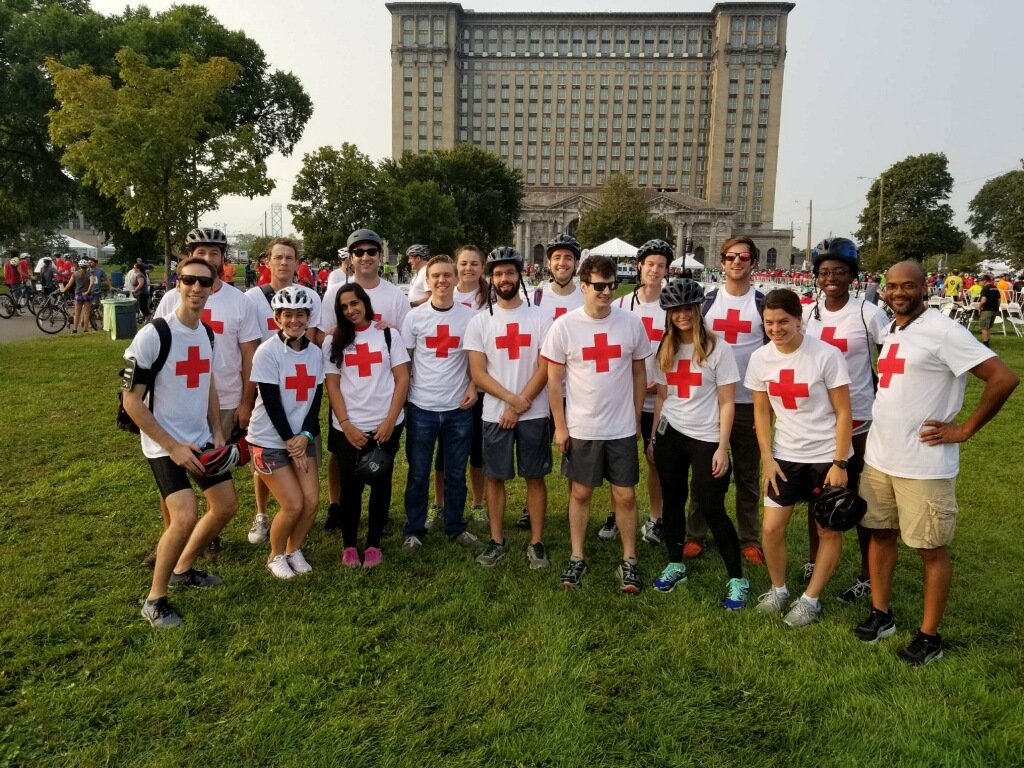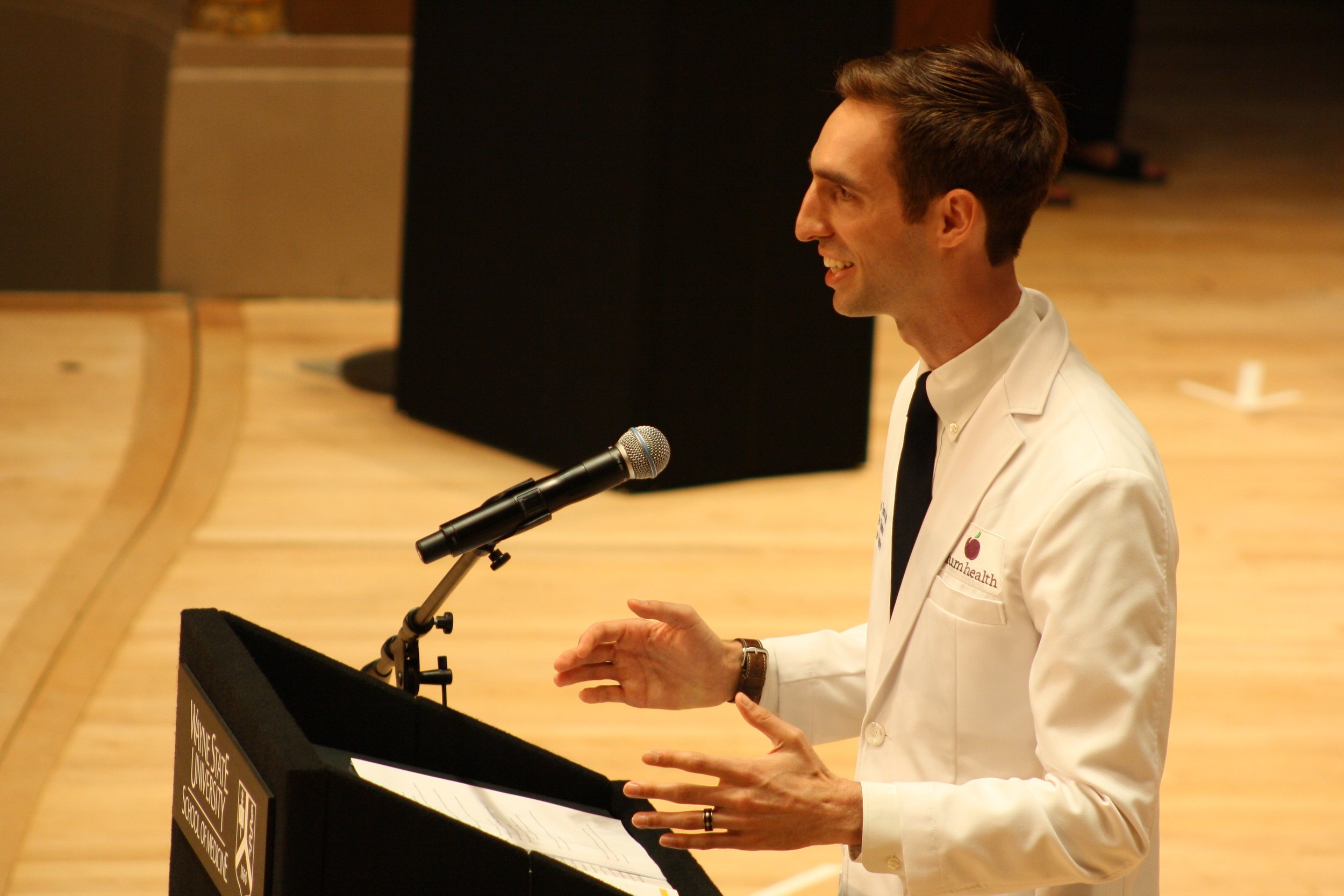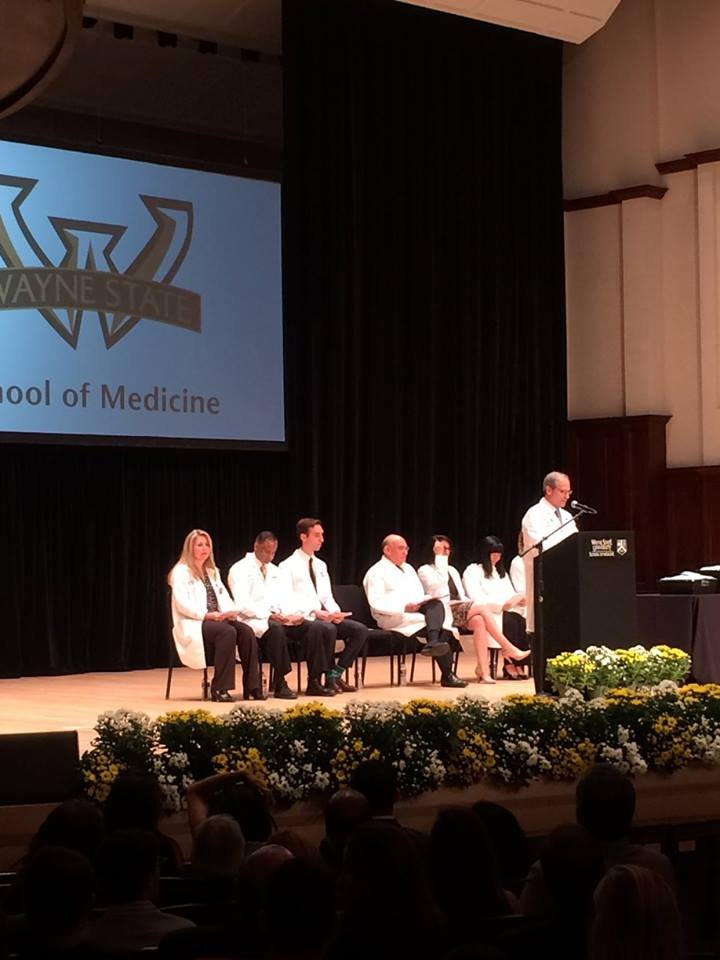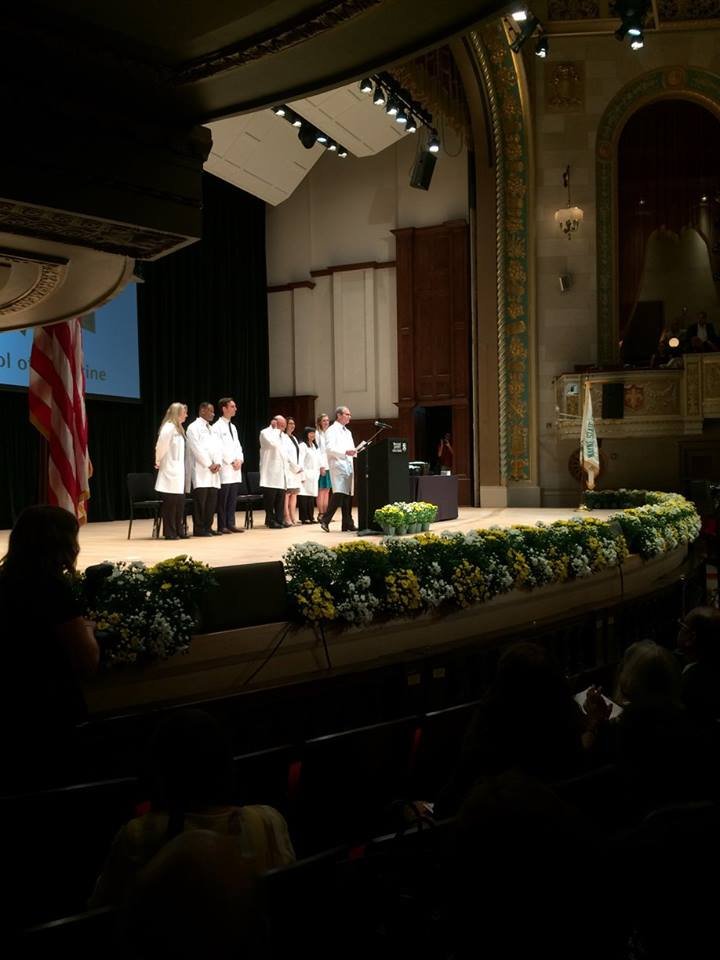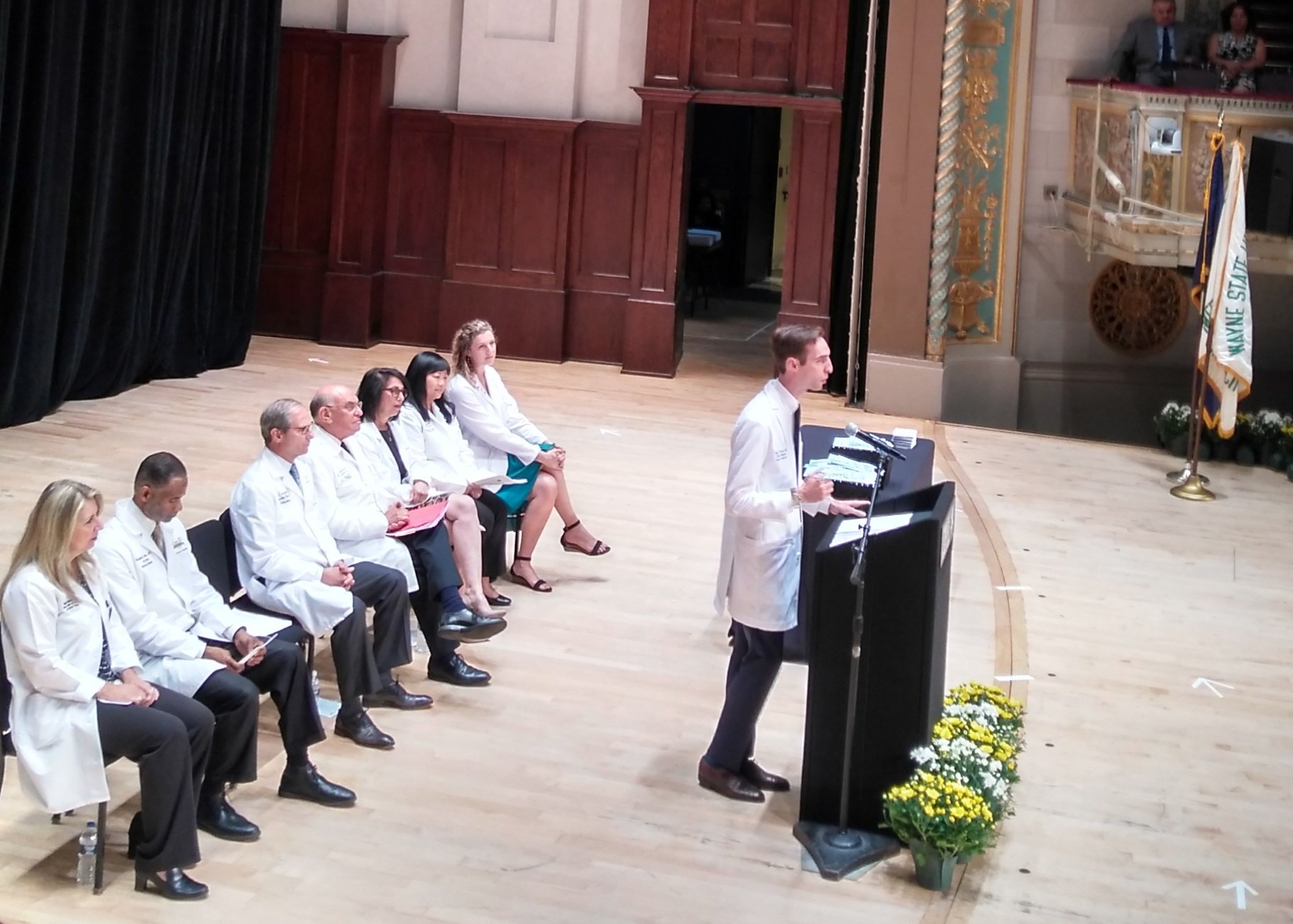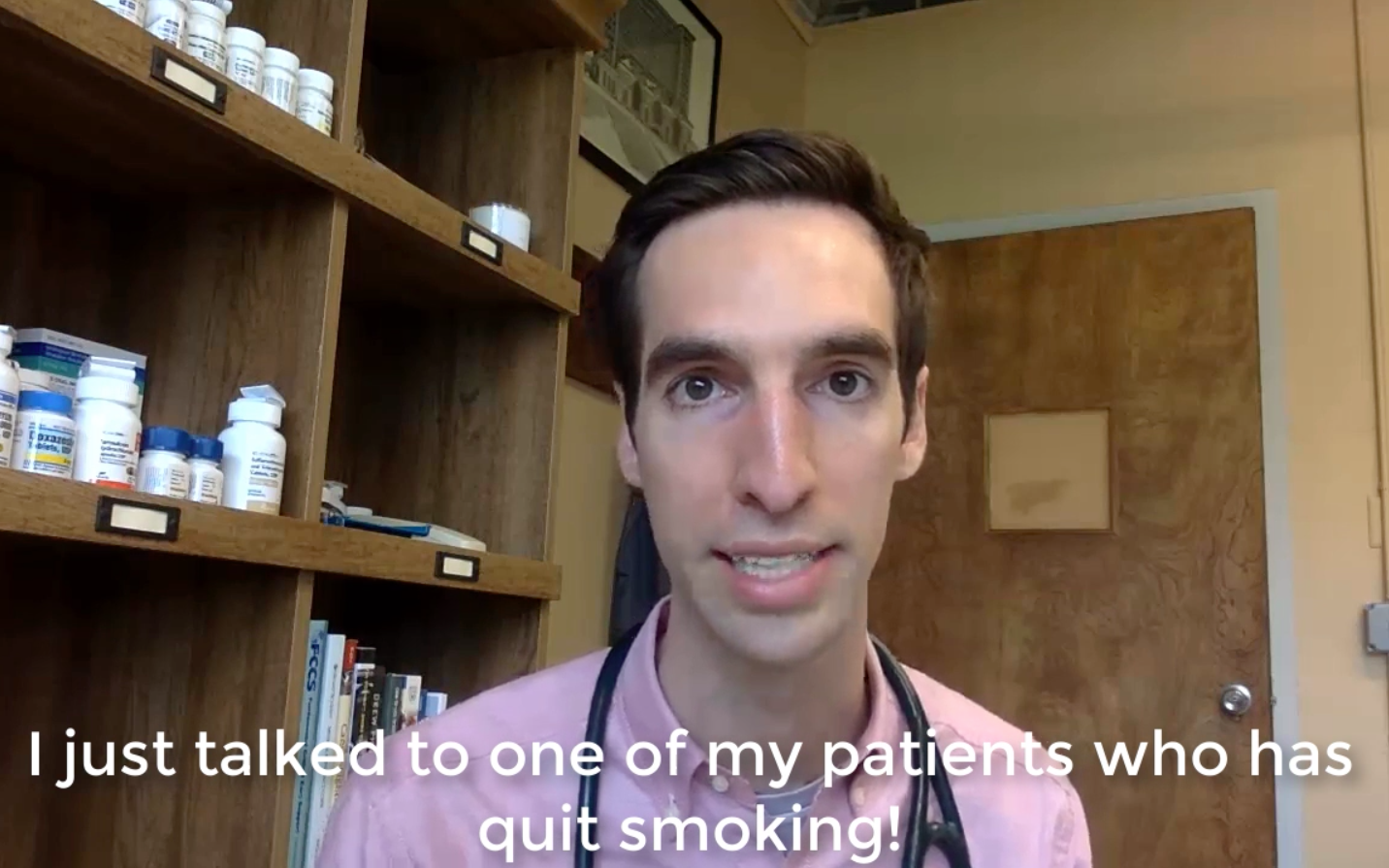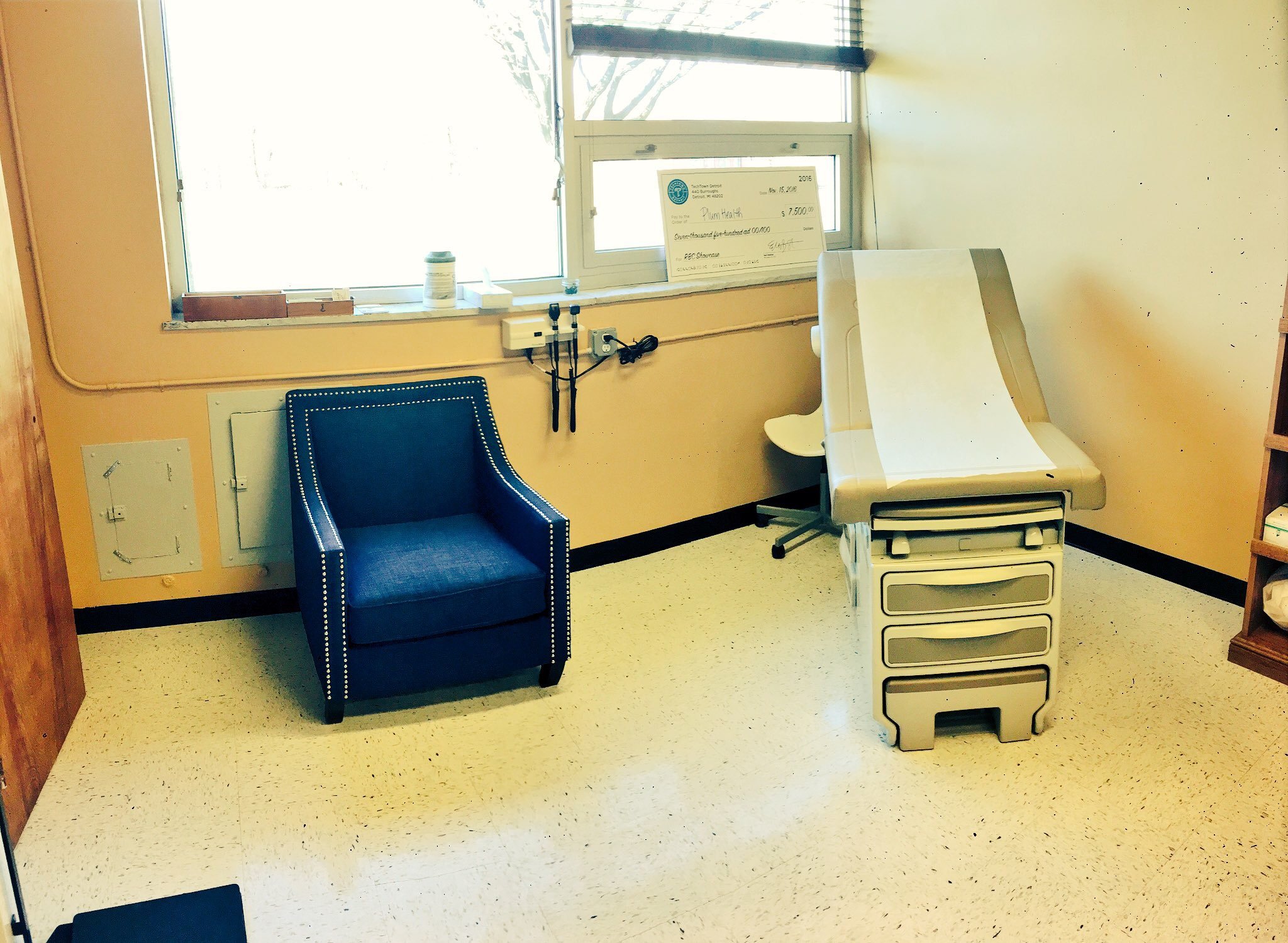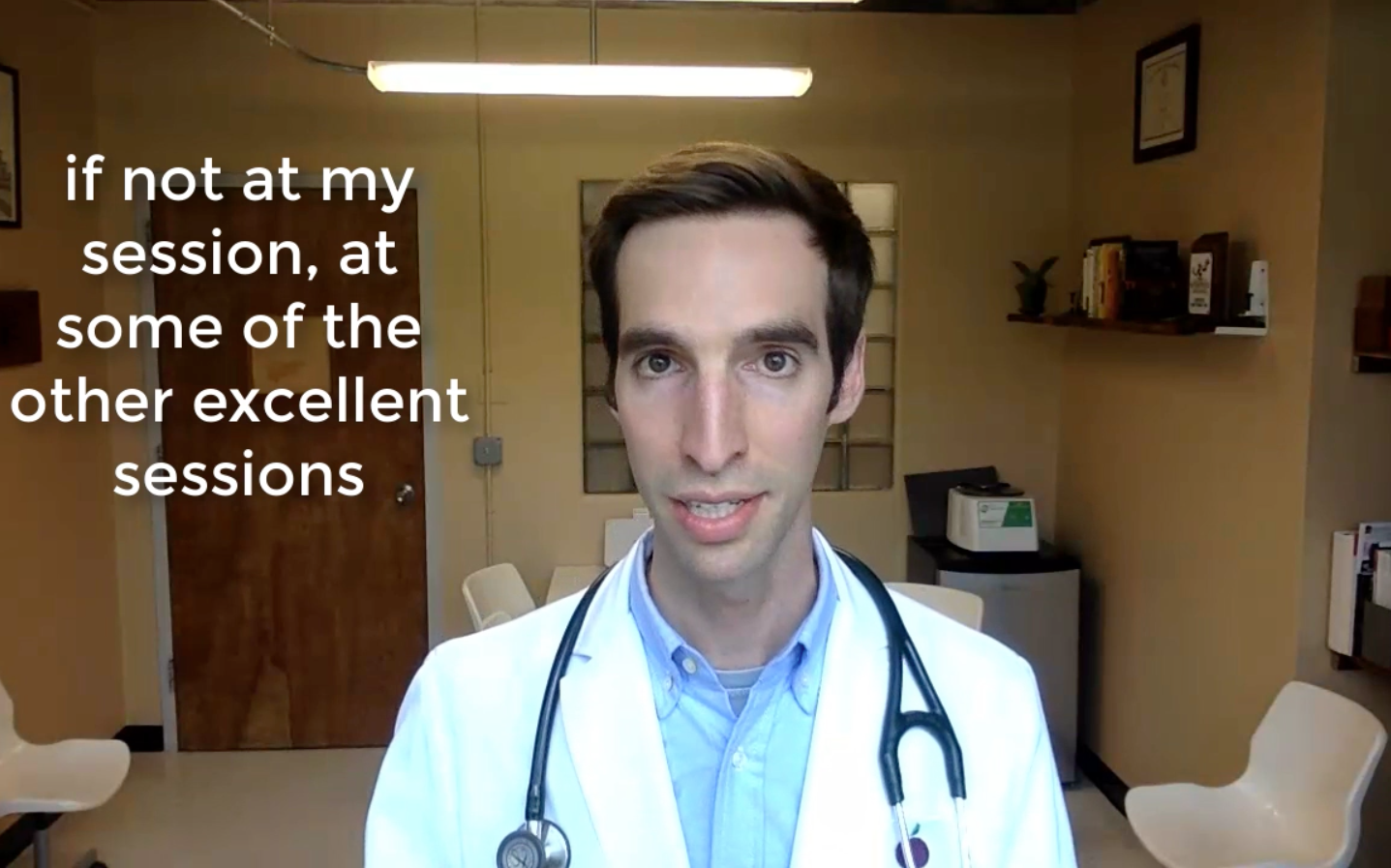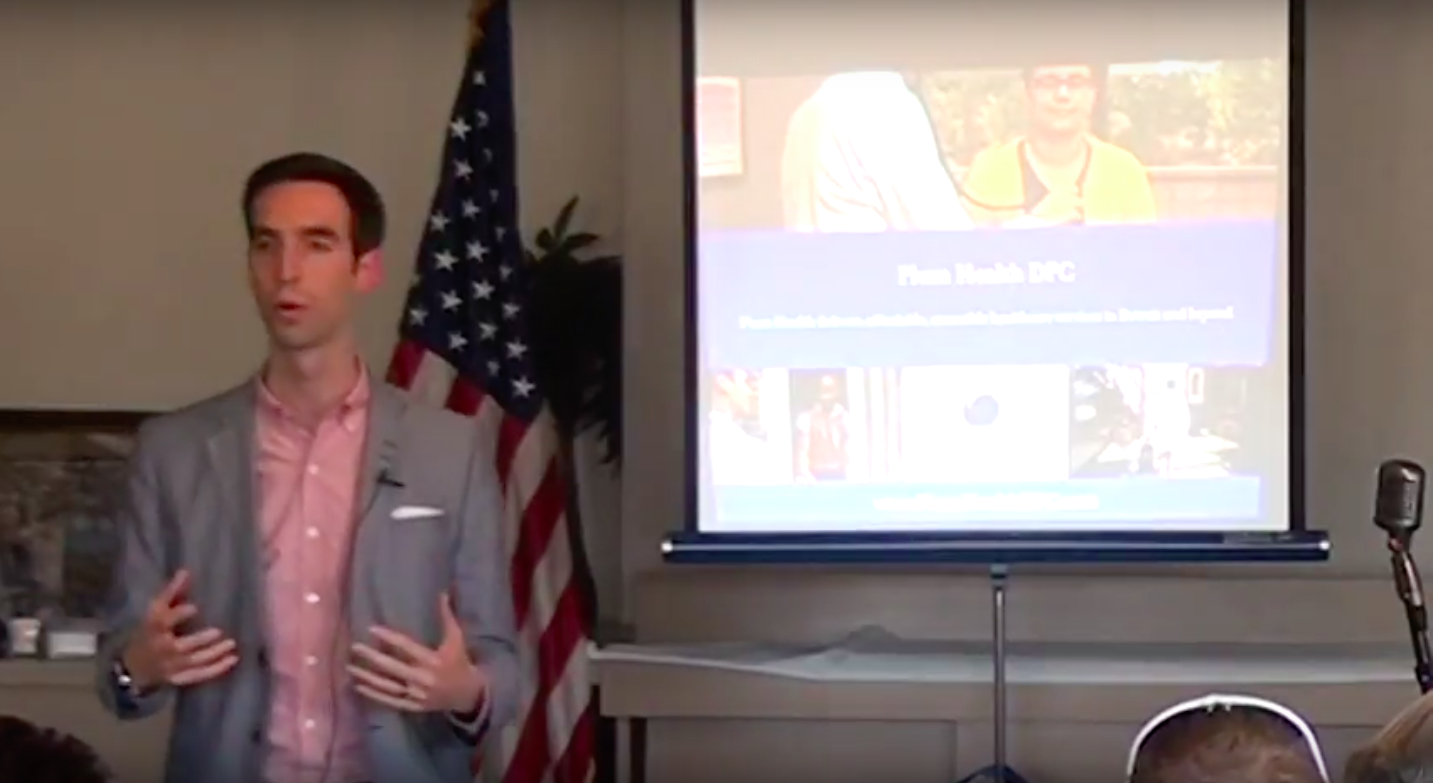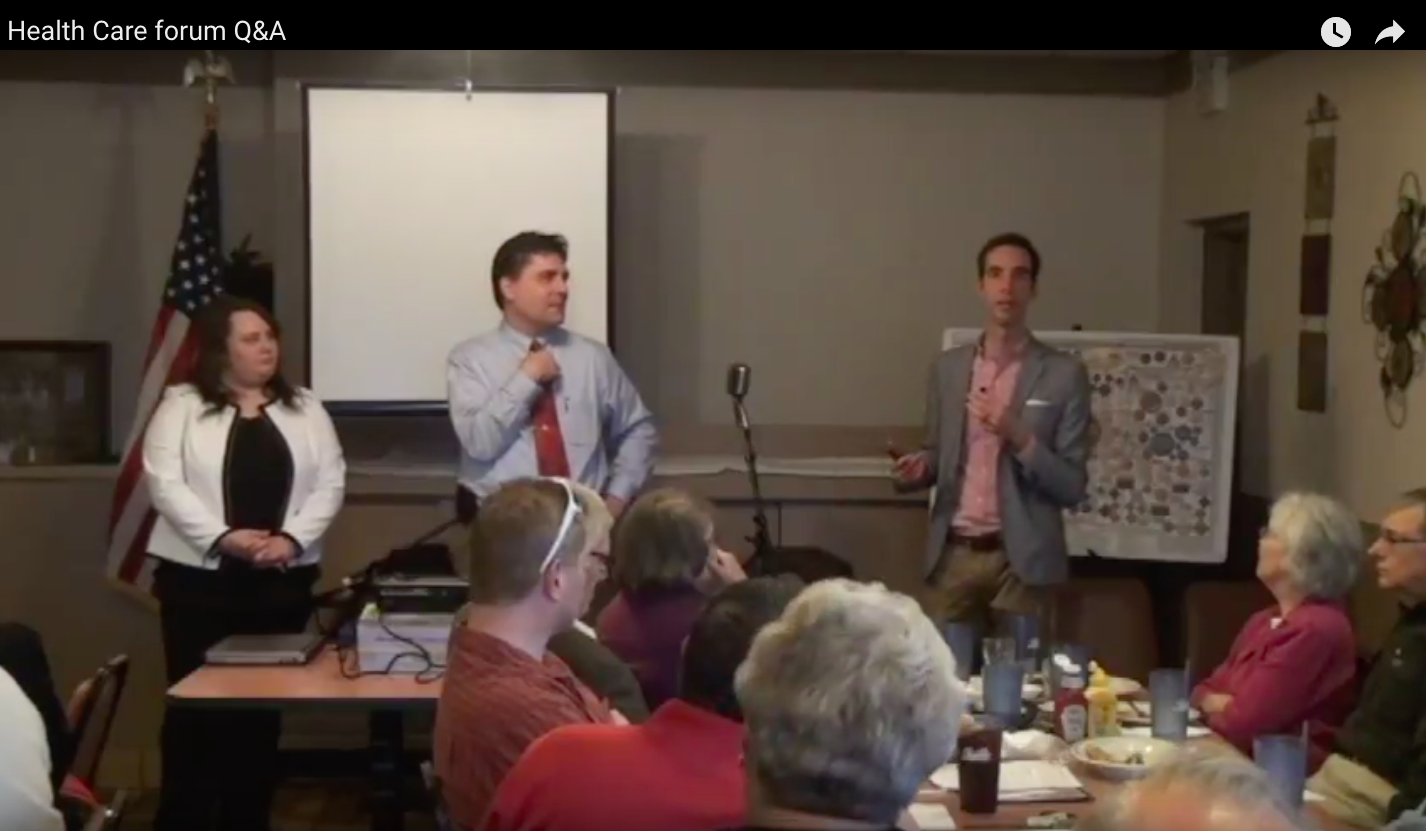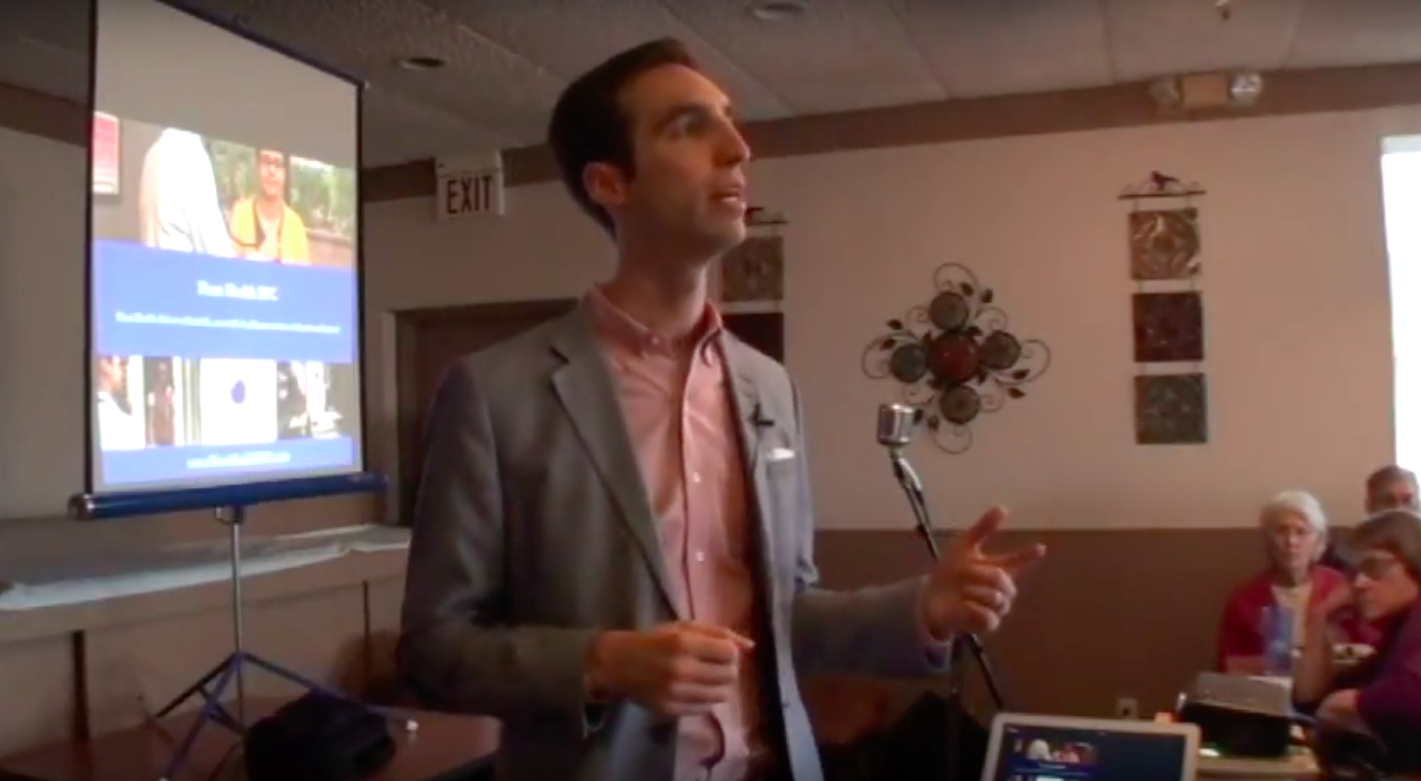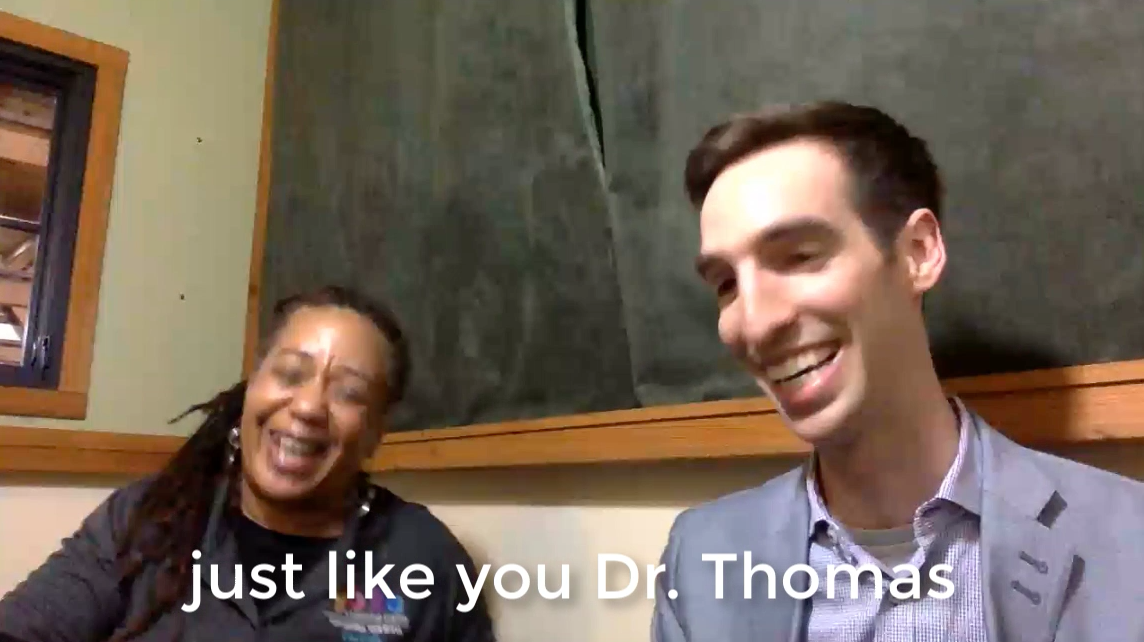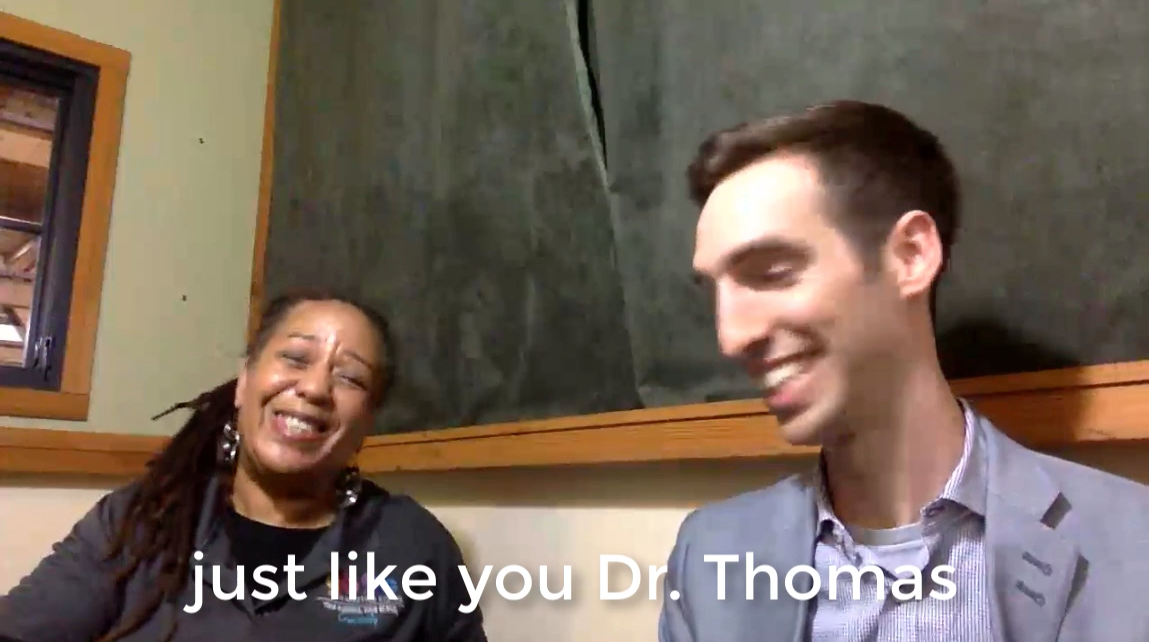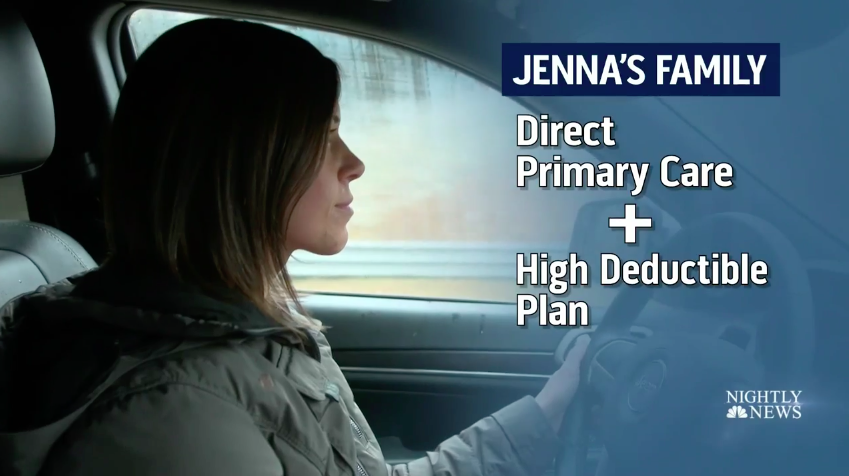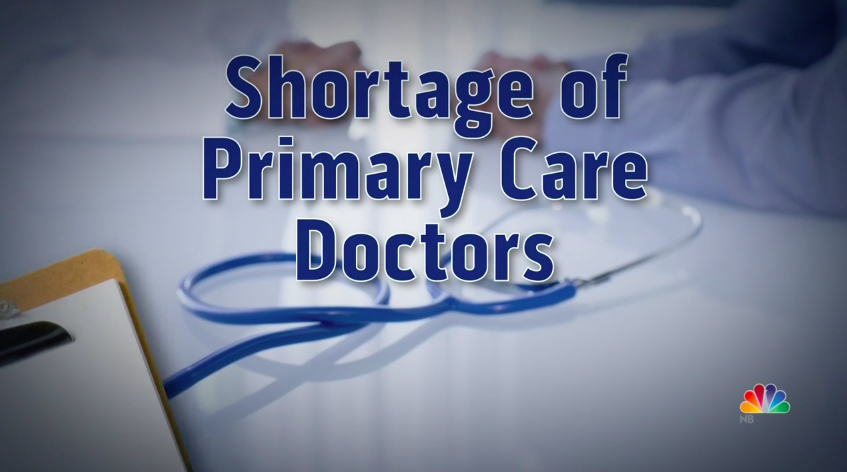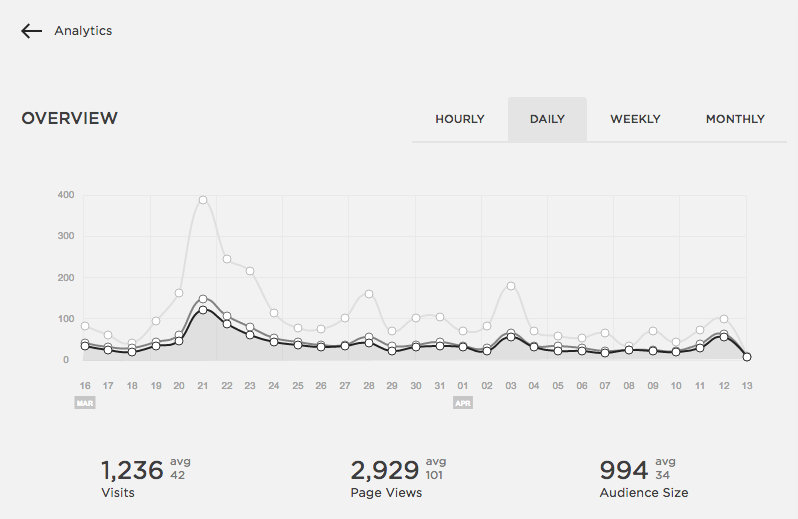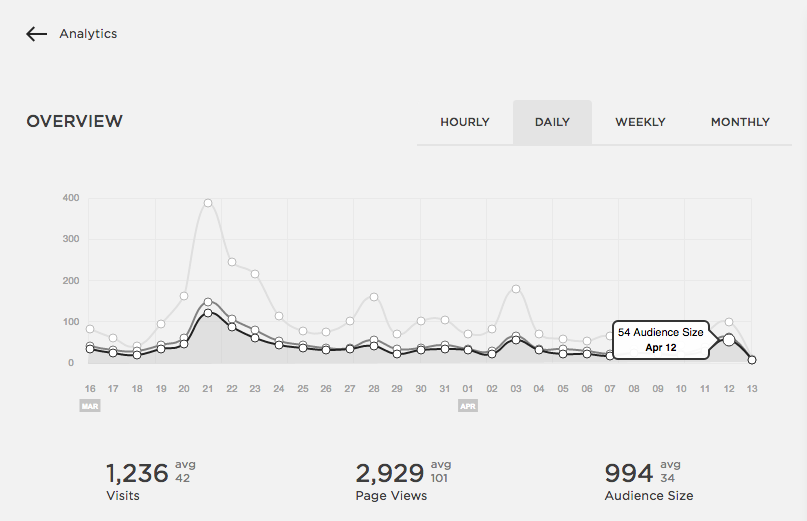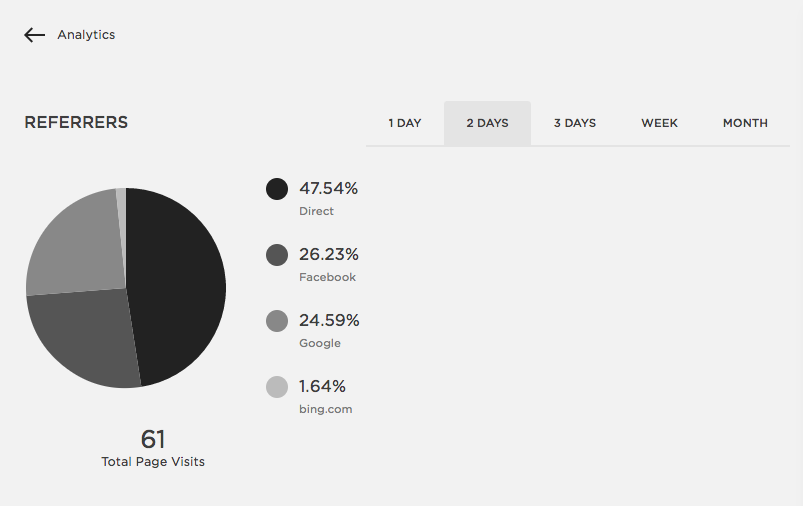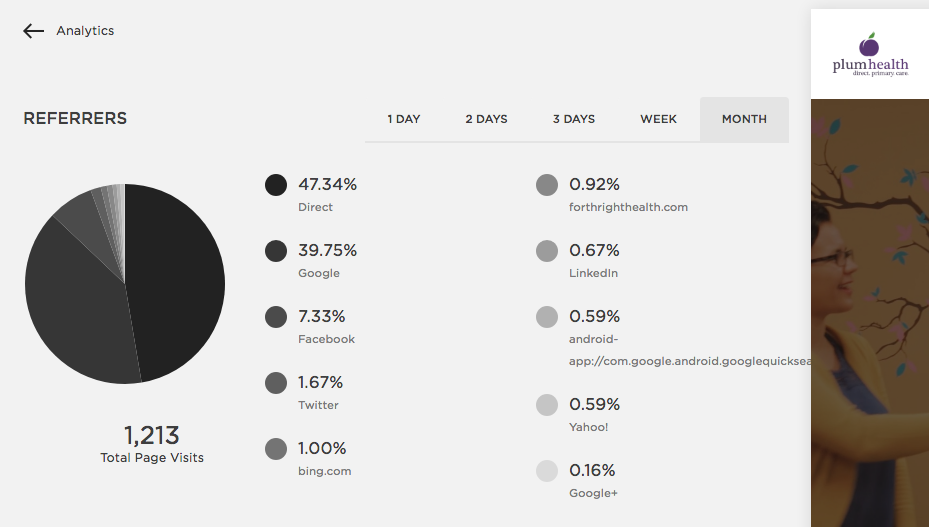Plum Health Blog
Motivation to Quit Smoking
We are all on a journey, and at Plum Health we like to guide people to better lifestyle choices. For example, if you're trying to quit smoking, we can help you by reminding you of your commitment.
How do we do this? It's really simple, actually. We just send you a text message! Here's a real life example, sent to one of our members last week:
These are real text messages, and this is a real patient. Their name has been removed for patient privacy sake, but you get the idea. When you're a part of Plum Health, you are someone who I think about and that I care about and that I want to help. Sincerely, whenever I think about this person, I send them a text and ask - "how's it going?"
And, there is a great deal of evidence to support these types of interventions. There is a systemic review/meta analysis on Text Messaging-Based Interventions for Smoking Cessation in the Journal of Medical Internet Research that came to this conclusion: "The current meta-analytic review provides unequivocal support for the efficacy of text messaging interventions for smoking abstinence."
That's why I send messages like this:
Further, texting patients about their health can have different applications. For example, a text message to a patient regarding their exercise patterns or medication adherence can help them to achieve their goals.
So, what's your goal? How do you want to become healthier? Can I help you get there?
Thanks for reading, and have a great day!
- Dr. Paul with Plum Health
Limitless or My Thoughts on Optimizing Productivity
This week I watched the movie "Limitless" starring Bradley Cooper. The film follows a struggling writer who can't seem to get anything done. Even though he has a book deal, he hasn't written a page, not even a word. He finds himself lingering at the bar, talking about what he might do rather than just doing it.
Then, Bradley Cooper's character meets an old acquaintance who introduces him to a medication - NZT - that improves his brain's capacity to access information, concentrate and focus. Within 4 days, he finishes his book and within a month, he is the lead consultant on the largest corporate merger in American history.
I found it interesting that the very first thing Bradley Cooper's character does when taking this mental capacity-enhancing medication is to clean his entire apartment. He literally throws away all of the things he doesn't need, washes his dishes, organizes his book shelf, tweaks the layout of his apartment, and sets up a desk that is most conducive to being productive.
Hollywood hyperbole aside, I think this movie touches on some really important take-aways. First, how do you organize your life? What does your physical space look like? Are you able to be productive in that space? What about your schedule? Are you creating space in your schedule so that you can capitalize on your peak brain capacity, your peak productivity?
For me, I am most effective when I exercise first thing in the morning and then schedule myself 2 - 3 hours of un-interrupted work. I can really zero-in on the one or two most difficult tasks for the day. This is the time that I'm "in the zone" or experiencing a "flow state" - I am engrossed in my work and able to interact with complex thoughts and decisions.
The time of day and how you mentally prepare for your peak productivity may be different for you. For example, you may be more productive in the night-time hours, after everyone else in your family has gone to bed. The point is this: it is incredibly important to think critically about how you structure your day and your life for optimal productivity, and even happiness.
I believe that this has important applications for medical conditions, namely depression, anxiety and ADHD. Let's tackle ADHD, for example. With ADHD, the two mainstays of treatment are medications and cognitive behavioral therapy (CBT). And, in CBT, the focus is on time management, organization, and making short- and long-term plans.
Here's why CBT is relevant for patients with ADHD, taken from CHADD, the national resource on ADHD: "CBT is relevant for adults with ADHD in two ways. First, in recent years, CBT programs have been developed specifically for adults with ADHD. Some of these programs aim to help adults overcome their difficulties in everyday executive functions that are needed to effectively manage time, organize and plan in the short term and the long term. Other programs focus on emotional self-regulation, impulse control and stress management".
As for Depression, if you are dealing with depression, and you are not structuring your day to include exercise, you may be missing out on a powerful form of treatment. Exercise can be a powerful antidepressant. However, the evidence is limited at this time. According to an article in the American College of Sports Medicine's Health and Fitness Journal, "Only two studies, both from researchers at Duke University, compared the effectiveness of exercise with pharmacotherapy. No differences between exercise and antidepressant medication were noted".
Final takeaways, you have the power to improve your mood and your productivity by organizing your life. Think critically about how you structure your schedule, physical space, and mental space, and create your schedule around your peak productivity.
Thanks for reading, and have a great day!
- Dr. Paul with Plum Health in Detroit, MI
A Golden Apple in My Office
This week, I was taking care of a family of 6 in my office! There was a lot of joyful movement and one of the toddlers grabbed an item from its resting place- it's an Apple, a Golden Apple, that I keep on my shelf and it's a reminder of my mission, vision, and values.
When I was in medical school at Wayne State University, I was awarded with the Golden Apple Student Award for having an understanding of the Art of Medicine as displayed by the care and understanding of patients. It was a tremendous honor, and it's something that I carry with me, as well as something that I want to give to my patients and reflect in my practice.
Often, my patients will ask me about the best course of action going forward, and sometimes the answer isn't always clear. You see, there's the science of medicine, the reproducible, empiric evidence with its best practices and treatment recommendations. These guidelines are important to know and important to follow in most cases. But, on the other side, is the Art of Medicine, and because every one is unique, an individual, with unique medical concerns, treatment choices aren't always clearly defined.
When difficult choices need to be made, I often ask my patients which course of action they'd like to pursue. This may be a unique aspect to my practice, but I know that it's important to engage in shared decision-making with the people that I care for. When decisions are made together, we can be on the same page about treatment, compliance to the plan is higher, and people feel like they have more control over the condition and situation.
Thanks so much for reading and have a wonderful day,
- Dr. Paul with Plum Health
Volunteer Doctor at Tour de Troit 2017
One of my favorite events in Detroit is the Tour de Troit, a friendly 25 mile bike ride through Detroit and some of its beautiful neighborhoods. For the last 5 years, I've been participating as a volunteer medic, starting during my medical school training and continuing through residency, and now as a doctor.
I love the ride because I get to see so many people who I know! There are so many people and businesses that support this ride and who make it a really special event. From the Great Lakes Coffee that's served with food from the Detroit Institute of Bagels, to the lunch after the ride from local restaurants, to all of the people from the community who come out and either volunteer or ride. It all adds up to a great time.
Biking is also a super healthy way to see the city, and during the ride we have police barricades and police escorts, so it makes for a very safe environment for everyone who participates. A big thank you to the Detroit Police Department for keeping everyone safe again this year!
When I talk about health, I'm not only talking about physiological health, but also social health - I believe that events that bring together people from different communities and backgrounds can serve to strengthen our region and make us better. That's why I love Tour de Troit, because it is this space where people from across Metro Detroit come together. For future events in this same vein, check out Slow Roll or Open Streets Detroit.
It's always a great ride, but it comes with a few injuries every year. This year the head count was about 7,000 riders and we had a handful of accidents and injuries to attend to throughout the day. There were about 20 of us medical volunteers, mostly medical students, and we delivered basic first aid for riders after minor injuries. For more major events, Emergency Medical Services were used.
So, with fall and cooler weather fast approaching, make it a point to get out today, tomorrow, and the next day on a bike ride or a walk or a run - this is a great time to be active and healthy, and your body, mind, and spirit will thank you for the effort.
Thanks for reading, and have a great day!
- Dr. Paul with Plum Health
Why It's Important to Have a Family Medicine Doctor in Detroit
Today I had the pleasure of speaking with Keith White of the Cancer Awareness Resource Network. We talked over the phone about his organization, the work we're doing with Plum Health, and the potential that we have to serve folks with cancer in Detroit and beyond.
Keith has had an amazing and inspiring journey. To read about him, check out what he wrote on his "about us"page. One thing Keith realized, though, is that even if folks have great health insurance, they may still have really high co-pays for doctor's visits and medications. He reached out to see what Plum Health could offer those with cancer and those in remission in his network.
Simply put, we can offer the best primary care experience in Detroit. What that means is that you have a Family Medicine Doctor or a Primary Care Doctor who is truly your advocate. I take my role seriously, and I will advocate for your health and wellbeing, your family and your finances while you confront cancer. How do we do this?
First, I focus on you and take a wholistic approach to your care. I have more time to spend with you, to get to know you and understand where you're coming from, what you're dealing with, and where you want to go with your life and your health. As your family doc, I will make sure that you're taking the right medications, that you are getting the right screening tests, and keeping up with treatment.
Second, I take care of folks in the context of their families and their communities. If there are emotional or familial stressors, we can talk about those and look for solutions together.
Third, I watch out for the financial wellbeing of my patients. This means that I make my prices clear and understandable, I don't charge co-pays for visits, and I give my members medications at wholesale prices.
Cancer and its treatment are hard enough, so when facing these difficulties, you want a primary care doctor who knows you well and who can advocate on your behalf.
Thanks for reading, and have a wonderful day,
Dr. Paul Thomas with Plum Health
The current look of our Plum Health Direct Primary Care office in Detroit, Michigan
Wayne State White Coat Ceremony Speech
The White Coat Ceremony, a New Tradition
The annual White Coat Ceremony is a relatively new tradition at medical schools across the country. In order to convey the virtues of the profession - compassion, altruism, duty, honor, respect, and responsibility - Dr. Arnold P. Gold created the event.
The first White Coat Ceremony was held at the Columbia University College of Physicians and Surgeons in New York in 1993. Dr. Gold believed that students should declare their commitment to the profession and the virtues therein at the beginning of their medical school journey, rather than at the end.
Now, 97% of medical schools have a White Coat Ceremony. The Ceremony gives a clear set of guidelines for these doctors-in-training to follow, and students are able to accept the obligations of the profession and commit to upholding the high standards that come with the title of "doctor".
The Declaration of Commitment
I solemnly pledge myself to consecrate my life to the service of humanity;
I will give to my teachers the respect and gratitude which is their due;
I will develop my skills with conscience and dignity;
The health of my patients and myself will be my first considerations;
I will respect those things that are confided in me;
I will maintain by all the means in my power the honour and the noble traditions of the medical profession;
My colleagues will be my comrades;
I will not permit considerations of religion, nationality, race, party politics, sexual orientation, or social standings to intervene between my duty, my peers, and my patients;
I will maintain the utmost respect for human life and I will not use my medical knowledge contrary to law;
I make these promises solemnly, freely and upon my honour.
My Speech
First of all, it was a tremendous honor to be selected as the Keynote Speaker for the Wayne State University School of Medicine White Coat Ceremony for the Class of 2021. When I received the phone call to be the speaker, I was nearly speechless and unsure of my ability to live up to the expectations that come with this role. I needed 24 hours to think on the offer.
After talking it over with my wife, I decided that this was something that I could do, and that I had a lot to say about the opportunity before these students and the medical profession in general.
When I was getting ready for medical school, I read several books. I was to be the first doctor in my family and I had a limited perspective on the medical field, i.e. I had no idea what I was getting myself into.
One of the authors that stuck with me was Atul Gawande, a surgeon and writer out of Boston. He wrote about the appealing aspects of a career in Medicine: autonomy, complexity, and a direct relationship between effort and reward.
However, something was missing. For me, that something is happiness. You see, doctors struggle with professional burnout, substance abuse, and suicide. We can speculate about why, but I think it's some combination of consistent perfection, frustrations with the monolithic systems within health care, and a heavy workload. I didn't want to get into the darker side of these concerns during the White Coat Ceremony, but they definitely influenced my speech.
Because of these concerns and these problems in the medical profession, I believe that we need to focus on creating a culture of happiness in the medical field. How can we train doctors to be happy? How can we create hospital systems, clinics, and insurance policies that foster physician wellness and happiness?
I don't know if there are great answers to these questions, but it's something that I have thought about deeply. For me, creating a happy practice involved creating a membership model for health care via Plum Health. That works for me, but during my speech, I encouraged these medical students to explore the profession fully and to find their own means of happiness within it.
I wish the very best to the WSU SOM Class of 2021. I know that these students will be a part of a generation of doctors that revolutionizes the way we deliver high-quality, compassionate health care. Without further ado, my speech:
Thanks for reading and for watching, and have a wonderful day,
- Paul Thomas, MD | Doctor with Plum Health in Detroit, Michigan
Wayne State University School of Medicine published an official write-up about the event on their webpage, here.
Plum Health featured in Good Life Detroit
This week, Plum Health DPC was featured on the blog Good Life Detroit. Jennifer is the creative spirit behind Good Life Detroit, and she did a fantastic job writing about our clinic and Direct Primary Care in general.
I really appreciated her perspective as a mother - she notes in the article that she has 5 children! - and that she paid $125 for a 20 minute doctor's visit for one of her children. Contrast that with our clinic, her child could have been seen for a full year for $120, with as many visits as needed included in that price.
This is how we make our primary care services valuable for the community that we serve. If you were not aware, Detroit is a large, low-income population. We recognize this as a fact, and have adjusted our pricing to be accommodating for the community that we serve.
Another great point that she brought up in the article is the frustration that people can experience when trying to reach their doctor! Sometimes reaching the doctor can be like pulling teeth. She puts it more eloquently, here:
"Another great benefit of Plum Health Direct Primary Care is patients have the opportunity to speak directly to Dr. Paul without the hassle of long wait times and call screenings. Instead of having to go through a series of steps just to talk to their doctor, patients can call, text, or email Dr. Paul directly. In some cases, some doctors require you to leave a message with the office staff for a callback.
"Most of the time the office staff member screen’s the doctor’s calls and you have to tell the staff member exactly what it is you need or what your question is. Then you wait for the doctor to call you back, which can be anywhere from the same day or one to two days later, all depending on the doctor’s schedule.
"Members of Plum Health have Dr. Paul’s cell phone number and email address. They can reach him anytime they need to ask a question in regards to their health."
There are several other great points that she makes throughout the article. I was really impressed at her depth and thoroughness. I also appreciate her helping to get the word out about affordable, accessible health care in #Detroit. We're trying to serve as many folks who need this type of care, and articles like these help us to reach communities outside of our circle of influence.
Thanks for reading and have a wonderful day,
Dr. Paul Thomas with Plum Health Direct Primary Care
Plum Health Direct Primary Care is in Detroit, Michigan. We practice old-fashioned family medicine, but we use technology to make ourselves more accessible to our patients when they need us! I love this graphic that Jennifer at Good Life Detroit created for us!
I also really liked this graphic that Good Life Detroit made about our pricing tiers at Plum Health DPC - really easy to read and understand!
How many calories should I eat each day?
How many calories should I eat each day? This is a question that my patients commonly ask of me and there is not a one-size-fits all answer. There are several steps to finding the appropriate calorie intake on a daily basis. One of those steps is calculating your basal metabolic rate.
Once you know your basal metabolic rate, you can add in the amount of calories that you burn each day from exercising. If you jog for 30 minutes each day, you may burn about 200 calories. If you do yoga for 30 minutes each day, you can burn around 150 calories.
Take the number of calories burned in the day and add that to your basal metabolic rate. If you have a reasonably stable weight, you can estimate that you are taking in about that calorie total in your diet.
Then you have to consider your weight goals. Are you trying to lose weight or gain weight? If you seek weight loss, then removing 100 - 200 calories from your diet each day may be a safe number for you to achieve your goals. Remember, in general, it is unsafe to lose more than 1 - 2 pounds each month.
Using an app like MyFitnessPal can be really helpful, especially if you are meticulous about documenting the foods that you consume and workouts that you perform each day. If you're a patient with Plum Health, I will review your data in the App and then we can make better decisions about dietary changes and exercise regimens.
In general, my opinion is more about eating healthier foods, not necessarily less food. I recommend eating foods discussed in "The End of Dieting", found on Amazon here: http://amzn.to/2snb78z
In it, Dr. Fuhrman recommends eating GBOMS, Greens, Beans, Onions, Mushrooms Seeds and Nuts. The point is to get more nutrients/calorie and he sums it up this way: Health = Nutrients/Calorie. The more nutrients per calorie, the better your health.
Kale, Bok Choy, Quinoa, Blueberries, Almonds, Walnuts, Wild Caught Salmon are a handful of examples of highly nutrient dense foods! This would be in contrast to Iceberg Lettuce, bananas, peanuts, and ground beef - these foods are less nutrient dense then the aforementioned foods.
Making healthier food choices, especially those foods that are nutrient dense, can help you to be healthier. Further, if you make organic selections, you will have less toxins in your body. Physician and author Dr. Mike Dow discusses the importance of eating organic foods in his book The Brain Fog Fix.
I hope that this is a helpful and comprehensive answer for you! Thanks for reading, and have a wonderful day,
- Dr. Paul Thomas with Plum Health Direct Primary Care in Detroit, Michigan
Opinion Published in the Detroit News
Our opinion regarding Health Insurance and Health Care was published in the Detroit News last night, and it is currently on the front of the Opinion Page!
Our opinion made the top of the page for the Detroit News Opinion section on June 5th 2017.
Here's our opinion in full:
Health insurance does not equal health care. As Americans, we often conflate these two entities. But they are in fact separate.
Health care is when you see your doctor. They listen to your story, empathize, perform a physical exam, make a diagnosis, and discuss treatment options. They can also order tests and give you medications. The compassion, the sincerity, the relationship — that’s health care. Health insurance is what covers you in the case of a medical catastrophe, like if you’re involved in an accident, have a heart attack or a stroke. Health insurance is a financial tool to prevent you from going bankrupt in case these catastrophic events occur.
These may seem like obvious statements, but we’ve grown accustomed to a system in which health insurance covers everything, from flu shots to ICU. This may not be a terrible thing; we all need flu shots, and some of us may end up needing ICU care. The problem exists in how we pay for these services.
If we continue to ask insurance companies like Blue Cross Blue Shield and government entities like Medicaid and Medicare to pay for all of our health care services, from blood pressure medications to cardiac bypass surgery, costs will continue to be inflated.
So if you’re paying $10 for your lisinopril each month, know that it actually costs $0.37. If you’ve paid $120 to check your cholesterol this year, know that it actually costs about $6.55. If you’ve ever paid $150 for a chest X-ray, it actually costs about $40. When we use our insurance cards to pay for the basic, routine health care services, prices are inflated. Fortunately, we now have a choice, an opportunity to use free market principles to save money on our health care services. More Direct Primary Care clinics are popping up in Michigan and across the nation.
Direct Primary Care doctors ask that patients pay a monthly membership, which allows them unlimited visits with their doctor and the ability to call, text or email the doctor any time. These doctors also provide wholesale medications, at-cost labs, and at-cost imaging services. By cutting out the middle man and asking consumers to pay for their basic services, the cost of these basic services decrease. Typical savings for medications, labs and imaging services range from 50 percent to 90 percent.
Ideally, people will pair DPC services with a health insurance plan that fits their needs and their budget, and covers them in case of a catastrophic event.
Paul Thomas, M.D., is a family doctor at Plum Health Direct Primary Care.
A screenshot from our Opinion in the Detroit News on June 5th, 2017.
Thank you for reading and have a wonderful day,
Dr. Paul Thomas with Plum Health Direct Primary Care in Detroit, Michigan
How to Quit Smoking in Detroit
The adult smoking rate in Michigan is 20.5%. So, of the Michiganders over the age of 18, roughly 1 in 5 are smokers and that translates to 1,557,000 smokers in the State of Michigan. Among the United States, Michigan has the 9th highest smoking rate among adults.
This is unfortunate because there are many adverse effects of smoking, from increasing the risk of heart attacks and strokes to increases in the rates of head and neck cancers and lung cancers.
However, there are effective treatments that can help you quit smoking, and once you quit smoking many health benefits can be realized, from lowering your blood pressure to decreasing your risks of cancer.
This week, I've had a few people ask for help in terms of smoking cessation, and I am happy to provide that type of help. In fact helping people to quit smoking has some of the best patient-oriented evidence in medicine. Full stop.
Logistically, I would have you come in for an appointment. We would talk about where you are - pre-contemplation, contemplation, or ready to quit aka "quit mode". Then we'd review your medical history, current medications and any pertinent health-related issues. We would then formulate a treatment plan based on you as an individual.
In the person discussed in this video, we used Zyban or Wellbutrin or Bupropion (all different names for the same medication). This is effective in reducing the cravings that people feel for cigarettes. Then, we set a quit date. This is 1 week after starting the Zyban (bupropion).
After the quit date is reached, nicotine replacement therapy is used to tamp down hour-to-hour cravings. This can be in the form of a patch or gum or lozenges. Again, we personalize the method based on your preferences.
Let me know if you'd like to start your journey to better health with Plum Health, you know that you can reach me through our contact page or by phone, 313.444.5630.
Sincerely,
Dr. Paul Thomas with Plum Health DPC
Direct Primary Care Doctors Have More Time
Have you ever had this experience: a doctor tells you that you have condition "X" with treatment "Y", they then proceed to leave the room. A few moments later, the medical assistant hands you a pamphlet explaining condition "X" and treatment "Y", saying "thank you so much and have a great day"?
Questions start to pop in your head - do they know that I've already tried medication "Z"? What are the common side effects of treatment "Y"? Perhaps you've then asked the medical assistant, who then tries to pull the doctor out of the next patient's room.
This can be extremely frustrating, and for good reason. When you see the doctor, you want to have a plan. Further, you want to understand this plan, the side effects of treatment, the potential costs involved, and other options if this option fails.
Direct Primary Care doctors have more time to spend with their patients. We use this time to explain treatment plans, from why we chose a specific medication to what you should expect and when it's time to make that referral.
As an aside, I was discussing this with some of my Direct Primary Care doctor colleagues: should we be sending information to our patients via digestible video segments?
My answer is as follows:
Should Direct Primary Care Doctors make videos for their patients? In short, maybe. If you are consistently repeating information for your patients, it might be a good idea for you to make a short "explainer" video. For example, the difference between strep throat and a viral sore throat or a preferred diet method, or what to do in the case of a tick bite.
If you are seeing common ailments, it may make sense to make videos explaining the symptoms, but you became a Direct Primary Care Doctor for a reason! You wanted to have more time to discuss issues with your patients, more time to explain why you are using that medication or why you are pursuing that course of action.
It would make more sense to make videos for a larger health system. If the videos are really high quality, the doctors who have less time to explain themselves can use them to give patients the information that they would want to convey themselves, but don't have enough time to convey.
Thanks so much for reading, and have a great day,
Dr. Paul Thomas with Plum Health Direct Primary Care
Detroit Startup Week 2017
Detroit Startup Week 2017 will begin on Monday May 22nd!!! It's going to be a great week of stories, panels, and information sessions about starting businesses, large and small. It will also provide entrepreneurs with an opportunity to network and learn from eachother.
This year, I was selected to give a presentation about starting a business in one of Detroit's neighborhoods, Southwest Detroit. I'll be sharing some of my experiences and I hope you can come out to the session, the link is here.
From their press release: "Startup businesses of every type and stage are invited to over 100 completely free events that are designed to support startup growth and build a stronger business ecosystem in Detroit."
In the session, I will be talking about how we started Plum Health, some of the mistakes that we've made, some of the experiences that we've had, and some of the support systems in Detroit that has allowed us to be successful.
If you're contemplating starting a neighborhood professional service in the City of Detroit or elsewhere, I hope that my session will be extremely helpful for you.
Thanks so much for reading, and I look forward to seeing you at the Masonic Temple next week!
- Dr. Paul Thomas with Plum Health Direct Primary Care
Book Review for Designing Your Life
This week, I read "Designing Your Life: How to Build a Well-Lived, Joyful Life" by Bill Burnett and Dave Evans. These two Stanford professors discuss the course that they teach on lifestyle design and guide you through the process that they have used for thousands of their students.
I enjoyed this read and they had some crucial take aways, both for individuals and larger groups.
In the Chapter 3, the authors write "Work is fun when you're actually leaning into your strengths and you are deeply engaged and energized by what you are doing". I feel this in the core of my being and this sentiment has been a driving force behind my decision to pursue my current career.
If you don't know about me, I left the high-speed churn of fee-for-service medicine for more meaningful and fulfilling relationship-based medicine. Plum Health is a membership model for healthcare and I routinely spend about 1 hour with each of my patients, especially during their first visit.
As this is a new business (as of November 2016), I still work at an urgent care two days each week to pay my bills and keep my business finances separate from my personal finances. When I'm working at the urgent care, I feel drained of energy with a mental fog. It's hard for me to "lean in" to this type of work environment where patients are shuffled in and out of the office as quickly as possible. It is not uncommon to have 40 - 50 patient interactions each day at the urgent care.
Compared to my work with Plum Health, where my visits last an hour and I have roughly 2 - 5 visits per day, I am able to fully engage with my patients and lean in to the work. I leave this environment energized after learning more about the people that I take care of. I also experience joy from time to time when the care that I deliver is especially meaningful or beneficial for the people in my clinic.
In Chapter 11, the authors discuss the importance of working and collaborating with others. They state, "We design our lives in collaboration and connection with others, because 'we' is always stronger than 'I'". They go on to relate the following: "Life design is intrinsically a communal effort. When you are way finding a step or two at a time to build, not solve, your way forward, the process has to rely on the contribution and participation of others."
This passage reminded me of the environment that I experienced while taking the Build Institute's course entitled "Co-Starters". It was awesome working in a collaborative setting, with a group of entrepreneurs working through similar but different problems. I learned a great deal from these classmates and it helped me to clarify several parts of my Life Design.
Later in Chapter 11, the authors discuss the importance of a community, and they define a community in this way: "community is more than just sharing resources or hanging out now and then, it's showing up and investing in the ongoing creation of one another's lives". It must have kindred purpose, and the best communities have a shared goal or mission. These groups should also meet regularly, so that an ongoing conversation can be held among members.
I see the TechTown, Build Institute, and Bamboo organizations facilitating a healthy community environment for small businesses and entrepreneurship in Detroit. Being a part of these organizations and attending the different programming put on by these groups has definitely added value to my life and the development of my business.
Thanks for reading, and I'd love to hear your thoughts on the book or the topics discussed in the book. Again, the book is called "Designing Your Life" by Bill Burnett and Dave Evans.
- Dr. Paul Thomas with Plum Health DPC
Direct Primary Care in St. Clair Shores
Last month, we were invited to a Health Care Forum in St. Clair Shores, Michigan with Senator Patrick Colbeck. We had a great meeting, with about 30 - 40 members of the community who are interested in the principles of free market healthcare that we discussed.
Senator Colbeck has been making a tour across the State of Michigan, talking with folks in similar forum-type settings about health care and ways that we can reform our primary care system. The last Town Hall that I was able to attend was in Grosse Pointe. The aim is to deliver higher-quality care with better service and at a lower price. Senator Colbeck is a staunch supporter of Direct Primary Care services and he has proposed a Medicaid Pilot program at the State level for DPC services.
Here's the portion of the talk that featured Plum Health DPC and the services that we provide:
Senator Colbeck spoke about the legislative efforts to advance Direct Primary Care at the State Level in his speaking slot, and to conclude the evening, we took time to answer questions from the audience about DPC, insurance, and other concerns:
Overall, it was a great event, with a great turnout and excellent audience participation and questions. I'm looking forward to the next one! Below are some still shots from the event.
- Dr. Paul Thomas with Plum Health DPC
Common Criticisms of Direct Primary Care
In this blog post, I'm going to list some common criticisms to Direct Primary Care and my responses to these criticisms.
In a traditional family medicine practice, each doctor typically sees a panel of 2,500 patients. If each patient comes in twice each year, that means roughly 100 visits each week, assuming that the doctor works 50 weeks each year, or roughly 20 visits each day. In Direct Primary Care, doctors reduce their clinic panel to 500 patients. Now, if each patient visits twice each year, the doctor will see 20 patients each week, or 4 patients each day. If each patient visits three times each ear, the doctor will see 30 patients each week, or 6 patients each day. This allows the doctor to spend up to an hour with each patient and use the remaining time in their schedule to answer phone calls, texts, and emails as well as handle the administrative duties that go along with running a Direct Primary Care practice.
The biggest criticism of doctors who switch from a traditional or fee-for-service practice to Direct Primary Care is this notion of patient abandonment. This means that if the doctor cuts down their practice from 2,500 patients to 500 patients, there will be 2,000 patients that are "abandoned" or without primary care services.
My response to this is simple: I will no longer perpetuate a bad system. In the current fee-for-service system, patients do not have enough time with their doctor for a thorough evaluation, for all of their questions to be answered, and to feel truly cared for. In the current fee-for-service system, doctors are rushing from room to room to room and are unable to provide the kind of high-quality care that their patients deserve,
In the current system, primary care doctors are marginalized and devalued, predisposed to burn out and leaning towards early retirement. Younger medical students see their burnt-out, grumbling, and overstretched attending doctors in Family Medicine and choose not to become primary care doctors in the first place. Why earn less than other specialties in a field that is less-than fulfilling?
Direct Primary Care doctors are fighting to make primary care relevant again, to restore the doctor-patient relationship, and to create value for patients in a way that the current fee-for-service system cannot.
There's an old adage: "take care of yourself so you can care for others", and it's something that primary care doctors have forgotten about. The expectation of the system is that we should work hard, keep our heads down, and not question the health care administrators who send an overwhelming volume of patients into our clinics each day.
But when we begin to sacrifice the quality of our work simply because we don't have enough time, it's time to take a stand and re-think our practices.
This brings me to the next criticism: how many conditions can a primary care doctor really treat? aka how much coverage can a family medicine doctor really provide?
When a well-trained family medicine doctor is able to practice at the top of their training, they are able to manage between 80 and 90% of all patient concerns. From sore throats, to blood pressure management, Pap tests, skin biopsies, abscess drainage, diabetic management, and beyond, family medicine doctors are able to care for a broad and diverse range of conditions.
The secret sauce in Direct Primary Care is the amount of time we are able to spend with our patients. If I have an hour, I can use it to drain an abscess, to talk about the efficacy of your antidepressants, to draw your blood for the lab work you need, to remove that ingrown toenail, to fully evaluate your vertigo, to evaluate your child's Vanderbilt scores for ADHD, to dispense the necessary medications and more.
In the current fee-for-service system, the expectation is that primary care doctors perform a cursory evaluation and then make a referral to a specialist. In the Direct Primary Care model, primary care doctors have more time to address concerns to the fullest of their training. And if that specialty referral is necessary, Direct Primary Care doctors have enough time to personally manage the transition of care, to make the follow up phone call and to get a full picture of what happened during that referral.
To summarize, Direct Primary Care doctors who leave the traditional fee-for-service system are not abandoning their patients. Rather, they are now free to practice medicine to the best of their ability by having enough time to give high-quality, thoughtful, and comprehensive primary care services to their patients. This will allow burnt out doctors to stay in practice for a longer period of time and it may inspire the next generation of medical students to choose primary care.
Thanks for reading, and have a wonderful day,
- Dr. Paul Thomas with Plum Health Direct Primary Care
You Should Own Your Health Information
You should own your information, especially when it comes to your health and wellness. Unfortunately, health care consumers don't have easy access to their own healthcare information, and this can lead to serious problems.
I firmly believe that you, the patient, health care consumer, or however you want to describe yourself, should be the sole owner of your healthcare information. When you visit a new doctor, you should take your health information with you, like a thumb drive or a credit card with an information chip.
With your permission, your doctor would review and evaluate you and your health information before making any treatment decisions. This would be closer to ideal than our current system in which healthcare systems or large hospital systems own your health information.
This may become problematic or even life threatening if your health records are kept with one hospital system, but you have to go to a different hospital system because of an accident or injury. Mistakes can be made if you lose consciousness and are unable to communicate your past medical history, allergies, and preferences.
Some hospital systems are beginning to allow patients access to their personal health information, but it is often through proprietary applications that may be difficult to navigate and even more difficult to share with different health systems or physicians.
In my practice with Plum Health Direct Primary Care, I consciously and deliberately share and make clear your health information. Of course, I only give you this information with your written permission. I share your information, lab results, diagnoses and treatment plans because it will allow us to make better decisions together.
I believe that when you are well-informed about your health status and equipped with the necessary information, we can make the best decisions about your health and treatment plans.
Furthermore, if you choose to seek a second opinion, the consulting doctor will have easy access to the information we discussed, and will therefore be able to make a better decision.
On a related note, I am really excited about the recent FDA approval for Direct-to-Consumer marketing of Genetic Health Information, namely 23andMe's Health + Ancestry product.
With only a saliva sample, 23andMe is able to produce a genetic health profile, with 10 potential genetic diseases including Alzheimer's Disease and Parkinson's Disease.
There are some pros and cons to this information. As I've stated above, with more information, you can make better decisions about your health care and how you want to live your life. On the down side, you may have a test with false positive or false negative results, or you may not understand the results at all.
In the case of a false positive, this would mean that you have tested positive for a condition that you may not have or may not develop. In the case of a false negative, this would mean that you have tested negative for a condition that you actually have or will develop.
These imperfections considered, I still think personal genetic testing will be a valuable tool as we move forward in this new health care ecosystem. It will enable patients and doctors to make better decisions about treatment. This is especially true as genetic profiles become more sophisticated and we may begin to learn how different genetic profiles are affected by different medications.
Thanks so much for reading and watching and have a wonderful day,
- Dr. Paul Thomas with Plum Health DPC
Plum Health Direct Primary Care in Midtown Detroit
This week, I was able to sit down with Pamela Owens of yb2c Marketing and talk about what we do at Plum Health DPC. We had a wide ranging conversation and it was a really fun time getting to know Pamela and her husband Keith Owens. They record their podcast out of Green Garage in Midtown Detroit. For the full episode, hit this link!
We dove deep on some issues, like why I've chosen to be in Detroit to practice Direct Primary Care. Fist, I am here because I want to give back to a community that has given a lot to me and my family. Personally, I received a world-class medical education from Wayne State University School of Medicine along with so many volunteer opportunities at free clinics across the city.
I learned a great deal by practicing medicine at the Detroit Medical Center, Henry Ford Hospital, Oakwood, St. John Hospital, Cass Clinic, the Student Run Free Clinic, and the Joy-Southfield Clinic. All of these learning experiences have shaped me into the physician that I am today.
I also see an opportunity in Detroit. This is a medically underserved area, with a dearth of primary care physicians. Because of my unique set of skills and training in Family Medicine, I am able to fill some of these gaps in care. I am proud to be providing this kind of affordable, accessible health care service in the City.
Finally, Detroit has provided many resources for small business growth. I've talked about this before, but being able to take classes at the Build Institute and with TechTown's Retail Boot Camp has allowed me to improve my business concept and execution substantially. It has also allowed me to network with several entrepreneurs in the community. Larger grant programs like the Motor City Match program has also provided funding for the build out of the next phase of my business, as Plum Health grows over time.
As a side note, If you haven't been to the Green Garage, it is a beautiful space in the Midtown community. It has been created in the most sustainable way possible, with almost all of the construction materials being repurposed from what had been in the building before the Green Garage built out that space. The materials were painstakingly conserved, and the space turned out wonderfully.
They hold a weekly lunch and meet up at 12 pm each Friday at the Green Garage, which is a great way to network and meet innovate people in the Detroit community. Here's a few photos from the last one that I went to (below).
Thanks for watching and reading,
- Dr. Paul Thomas with Plum Health Direct Primary Care
Plum Health out at America's Future Foundation Event
This week I was invited to speak at an America's Future Foundation meetup in Detroit. It was held at the Detroit Beer Company and the topic of discussion was free market healthcare. I was there representing Plum Health DPC and one of my colleagues, Chad Savage, MD of YourChoice Direct Care was there as well.
We talked for an hour about free market options for healthcare services in Detroit and Michigan, specifically Direct Primary Care. It was a great event and the audience members asked some great questions.
For example, people often ask about the difference between Direct Primary Care and Concierge Medicine. I wrote a blog post where I discussed the differences in detail, but in a Concierge Medicine Model, doctors charge a membership fee that is often greater than $100/month, continue to bill insurance for visits, and they do not typically offer money-saving ancillary services.
In contrast, Direct Primary Care doctors have membership fees in the $10 - $100/month range, do not bill insurance companies for services rendered, and typically offer money-saving ancillary services, like wholesale medications, at-cost labs and at-cost imaging.
Another common question about Direct Primary Care is about the legality of the practice. In 2014, Senator Patrick Colbeck spearheaded an effort in the Michigan Legislature to make Direct Primary Care "legal" in the State. I place "Legal" in quotation marks because it was not illegal before, but a grey area. Senate Bill 1033 of 2014 clearly defines Direct Primary Care and similar retainer-based medical services as legal in the State of Michigan.
Another common question is "how is this possible?", in reference to the savings on medication, labs and imaging services. As in, where does all that extra money go between the insurance-based prices for services and the direct prices? I often give examples of how I save my members on their meds, labs and imaging, and the attendees at this talk asked specifically about how I was able to save on these services.
It starts with wholesaling the medications and setting up contracts with independent retailers for lab services and imaging services. This way, we can negotiate at-cost pricing for services that you may need. These are often based on volume, so the more people who demand these services, the lower the overall costs. Then, I am not paying any middle men between these ancillary services and you the consumer. I do not mark up the prices on my meds, labs, or imaging services, because I want to provide you with the greatest amount of value for your healthcare dollar.
There were several other questions, but I will stop here! Again, it was a great meet-up and I'm looking forward to their next event! They have several chapters across the country, so you can see when and where their next events are happening on their Facebook page, just click "events".
- Dr. Paul with Plum Health DPC http://www.plumhealthdpc.com/
Direct Primary Care on NBC News
This week, Direct Primary Care was featured on NBC Nightly News with Lester Holt. If you are unfamiliar with this new model for healthcare delivery, Direct Primary Care is a membership model for healthcare that charges a relatively low fee for primary care services. The NBC News team starts out the piece by discussing the amount of time that the doctor is able to spend with the family, "maybe 30 - 45 minutes". At Plum Health, our visit time is about 1 hour for initial visits and 30 minutes for follow ups, so on par with what was stated in the video.
The video then goes on to discuss the benefits of Direct Primary Care with unlimited visits and the ability to text message the doctor for a flat, monthly fee. For most direct primary care doctors, patients are able to visit the doctor and have digital interactions with the doctor whenever necessary. At Plum Health, our patients can call, text, and email anytime and see us in the office anytime they need us.
The article then discusses the cost of the monthly membership, which is typically between $25 and $85 per month. In our case at Plum Health DPC, our prices are between $10/month for children up to $89/month for adults over 65 years of age. Young adults under 40 years old pay $49/month and adults over 40 years old pay $69/month. Direct Primary Care practices across the country typically fall in the $10 - $100/month range. Any monthly charges over and above $100 gets into the realm of Concierge Medicine. We wrote a previous blog post about the difference between Direct Primary Care and Concierge Medicine, here.
The NBC Nightly News piece goes on to discuss what's included in or what is covered by a typical Direct Primary Care practice. Typically, DPC practices cover unlimited primary care visits. At Plum Health DPC, our patients have unlimited visits with Dr. Paul, unlimited texting, emails and phone calls or unlimited digital communication. In addition, we charge at-cost pricing for routine lab tests and we charge wholesale prices for medications. Some doctors choose to include some basic blood work in the cost of the membership.
Because we don't charge an enrollment fee, we chose not to include basic blood work in our service. Instead, we perform at-cost labs at Plum Health. Complete blood cell counts are $4, Comprehensive metabolic panels are $6, Thyroid Stimulating Hormone tests are $6, Lipid panels are $6.55, and we have a modest draw fee of $2.
Families save money by choosing Direct Primary Care. The NBC News article discusses how the family featured in the video saves $500 each month by using a Direct Primary Care service and pairing that with a low premium, high-deductible plan.
This pairing of services is the ideal way to save money on your health care expenses. The issue that some people run in to is finding that Catastrophic coverage plan. Many of those plans have gone away after the Affordable Care Act was signed into law by President Obama. This is one of the many road blocks to wider implementation of Direct Primary Care plans. The other impediments include the inability to use Health Savings Account funds for DPC plans.
The next part of the article gets into the philosophy of Direct Primary Care. It talks about how Dr. Cunningham left a traditional family medicine practice. Now that he operates a Direct Primary Care practice, he sees fewer patients and makes less money. But, the income loss is worth it to him, so long as the insurance companies no longer dictate how he's supposed to take care of patients.
This part of the video touched a nerve with me. So often, we as doctors do not take care of our patients in the most optimal or ideal way because of the barriers put in front of us by insurance companies. By not accepting insurance company dollars, we are free to take care of patients in the way that they deserve to be taken care of. Dr. Cunningham says "It feels great to be practicing medicine the way it's supposed to be", and I agree!
Operating Plum Health DPC has allowed me to develop deep, trusting relationships with my patients that I never got to experience as a resident or in a traditional practice. The element that is so important to developing this relationship is time. When I am able to spend an hour with each patient during each visit, I am able to give them my full attention and deliver the kind of care that they deserve.
Dr. Cunningham, a Direct Primary Care doctor in Massachusetts, talks about how he is able to practice medicine the way he's supposed to be.
On the other hand, the article highlights the critical elements of Direct Primary Care: "Critics say there's already a shortage of primary care doctors". They don't really expound upon this thought or bring this thought to its logical conclusion, which is that if we already have a shortage of primary care doctors, then it is inexcusable for those primary care doctors to see less patients.
I take umbrage with this remark. There is a dearth of excellent primary care doctors because the practice of primary care medicine is one of the most challenging fields in medicine and it is often the lowest paid field in medicine. Medical students often choose higher-paying specialties in medicine that come with greater job satisfaction and less role strain.
I see the practice of Direct Primary Care as solving some of the issues with the current system. DPC medicine helps to eliminate the role strain that young doctors feel. When I have an hour to take care of a patient, I can really address them as a whole person. In the traditional or fee-for-service model, a primary care doctor has 10 - 15 minutes to address the whole patient, and this is nearly impossible. I've been there, seeing patients at this rate, and the best you can do is address 1 or 2 concerns before you have to move on to the next patient.
Direct Primary Care also can offer doctors a chance to earn a greater income if they have a panel of roughly 500 patients or members in their DPC practices. Some doctors choose to see less patients in their DPC practices, and therefore would make less money, but there is an opportunity to increase primary care doctors' salaries.
By eliminating the role strain that primary care doctors experience and by paying them a better salary, we can attract more medical students to primary care medicine fields like family medicine, general internal medicine, and general pediatrics. I take umbrage with the thrust that doctors should not see less patients because the system is broken.
It would be worse to see the system perpetuated with exhausted, frustrated, burnt-out primary care doctors seeing 2,500 patients each year. It would be better to have more medical students attracted to primary care fields, seeing 500 patients each year, limiting their role strain and increasing their incomes.
Another critique is that Direct Primary Care does not cover specialists visits or hospitalizations. I find this to be a moot point because the main thrust of Direct Primary Care is to deliver primary care services directly to our patients. We make no mention of Direct Specialty Care or Direct Hospital Care, and we make no attempt to promote these services in our offerings.
Too often, American consumers conflate "health care" with "health insurance", but these are distinct and separate services. You need to have health insurance, either a low-premium, high-deductible plan or a catastrophic coverage plan. This health insurance does exactly what the name implies: it insures you and your health against major, unexpected events.
Direct Primary Care, then, delivers the affordable, every-day primary care services that are needed by you and your family. You need to have primary care coverage, but you shouldn't have to pay an insurance company to pay your primary care doctor for what amounts to low-cost primary care services.
It makes sense to pay an insurance company to pay hospitals and surgeons for higher cost care, but it doesn't make sense to pay insurance companies to pay your primary care doctor for relatively lower cost primary care services.
As a side note, Plum Health DPC does offer specialists consultations for difficult clinical questions through our relationship with Rubicon MD. This allows us to ask about diagnostic testing, special labs to order, or to help us solve a difficult problem. But, as in the video, we do not offer specialists visits as a part of our service.
The closing thought from the NBC Nightly News video is that despite the drawbacks, it is worth it for some individuals and families to pay for Direct Primary Care services. As a Direct Primary Care doctor, the benefits are clear: you have a doctor on call for you any time you need it and access to time and cost-saving auxiliary services. The NBC reporter says that "Direct Primary Care is the answer, to save money and have a doctor who's always 'in'".
Thanks for reading and have a wonderful day,
- Dr. Paul with Plum Health DPC
Facebook Marketing for Doctors
Hello Doctor Colleagues! As I've started a new medical practice in the last year, I've had to become very familiar with several marketing channels. In this blog post, I will outline how to approach Facebook Marketing and how you can measure the results of your efforts for paid and unpaid posts.
Basics:
Set up a Facebook page for your business. This will allow you to use paid advertising via the Facebook platform, which is one of the most valuable and effective marketing channels available. You should not market your practice from your personal page only, because the number of people who can "friend" you is typically capped at 5,000, whereas your business page can receive unlimited followers. Also, you cannot pay to boost content or purchase ad space on Facebook via your personal account.
Create Engaging Content:
If you want to attract new members to your practice, create unique, interesting and engaging content. In simple terms, the most effective content consists of video, photos, sharing articles related to your practice or practice philosophy, and short lines of text. You want to create the kind of content that is "shareable", where your Facebook page followers will want to "share" this content with their friends and family. Educational material about hot topics in health and healthcare are especially "shareable".
An Example:
Recently, I wrote a blog post and made a video about bike lanes in Detroit. Accessible healthcare is something that I'm passionate about, and if I can further the progress that we've made in Detroit in terms of human-centered urban planning and Complete Streets, that would be ideal! Anytime we improve our walking, biking, and transit infrastructure, we provide more people with access to parks, grocery stores and doctors - all things that people need to be healthy.
As you can tell, I care a lot about this subject! So, pick a topic that you're passionate about and try to start a conversation with your community. Maybe for you it's vaccines, seasonal allergies, antibiotic overuse, the opioid epidemic, etc... These are all great topics that you can write about and share with your Facebook followers.
Once I posted my video into Facebook regarding bike lanes in Detroit, I opted to boost the post. You can boost a post on Facebook by linking your business bank account to your business Facebook profile. You can boost your content for a few dollars on up to thousands of dollars.
As I've started to understand Facebook, it's algorithm, my followers, and my community better, my skill with boosting content has improved. It may take a few months and several boosts for you to understand what works for you, so start small with $10, $20, or $30 boosts and see what does well. As your comfort level grows, add more money to get better results.
In this video, I show my Business Facebook Page, and demonstrate how to boost a post, choose a location, choose an age range for my audience, and choose interests that my potential customers may have. You can also set the duration that you want the advertisement to run, and in this instance I select for a 24 hour period. View it here:
From there, I keep tabs on the boost by answering any questions and responding to any comments from my audience. After the 24 hour period has expired, I look at my results. These results can be "soft results": likes, shares, video views, audience members reached, etc... But, as we are operating businesses, these soft results are not as important as patient sign-ups. I discuss the "soft results" in this follow up video:
Additionally, the results of your Facebook boost can be measured by seeing how many people went to your website. I use Squarespace, which shows some "analytics" or data related to web traffic. Below, you can see our web traffic over the last 1 month. That spike on March 20th and March 21st came after we were featured on Local 4 WDIV in Detroit. The most recent spike on April 12th is a result of our recent Facebook post and boost, which linked directly to our Plum Health website. Our traffic typically hovers around 20 - 30 unique visitors and after the boost, we received 54 unique visitors.
Furthermore, in Squarespace's Analytics tab, you can see where your web traffic came from. These traffic sources are called "Referrers", places like direct browser traffic, Google searches, Facebook, Twitter, etc... Over the last 1 month, 47% of our traffic has come directly to our website, or people typing "PlumHealthDPC.com" into their browser. 39% of our traffic has come from Google, or people searching for "Plum Health" or "Direct Primary Care in Detroit" or something similar.
Importantly, over the last 48 hours or the time frame of our most recent boosted post, 26.23% of our traffic came from Facebook or about 14 unique visitors followed us from Facebook to our website. This spike in traffic from Facebook outpaced Google traffic. This is demonstrated in the photos below:
Finally, if you received any calls or direct messages in the 24 - 48 hour period after your post, you can ask your potential customer how they heard about your service. If they respond that they saw your ad on Facebook, then your sales funnel is working to your advantage. As a side note, it is always important to ask your patients or customers where or how they heard about you - that way you can focus your marketing efforts into that area.
For Plum Health and for this post, we received one inquiry during the advertisement and one inquiry in the 24 hour period after the advertisement ended. We were able to schedule both of those inquiries for appointments in the coming week.
Thanks for reading, and if you have any questions, leave them in the comments section below!
- Dr. Paul with Plum Health DPC
One last thing, if you’re a Primary Care Doctor or Allied Health Professional that is looking to Start and Grow a Direct Primary Care practice, check out our sister site www.StartUpDPC.com. You’ll find more information and in-depth courses on building the Direct Primary Care practice of your dreams.



